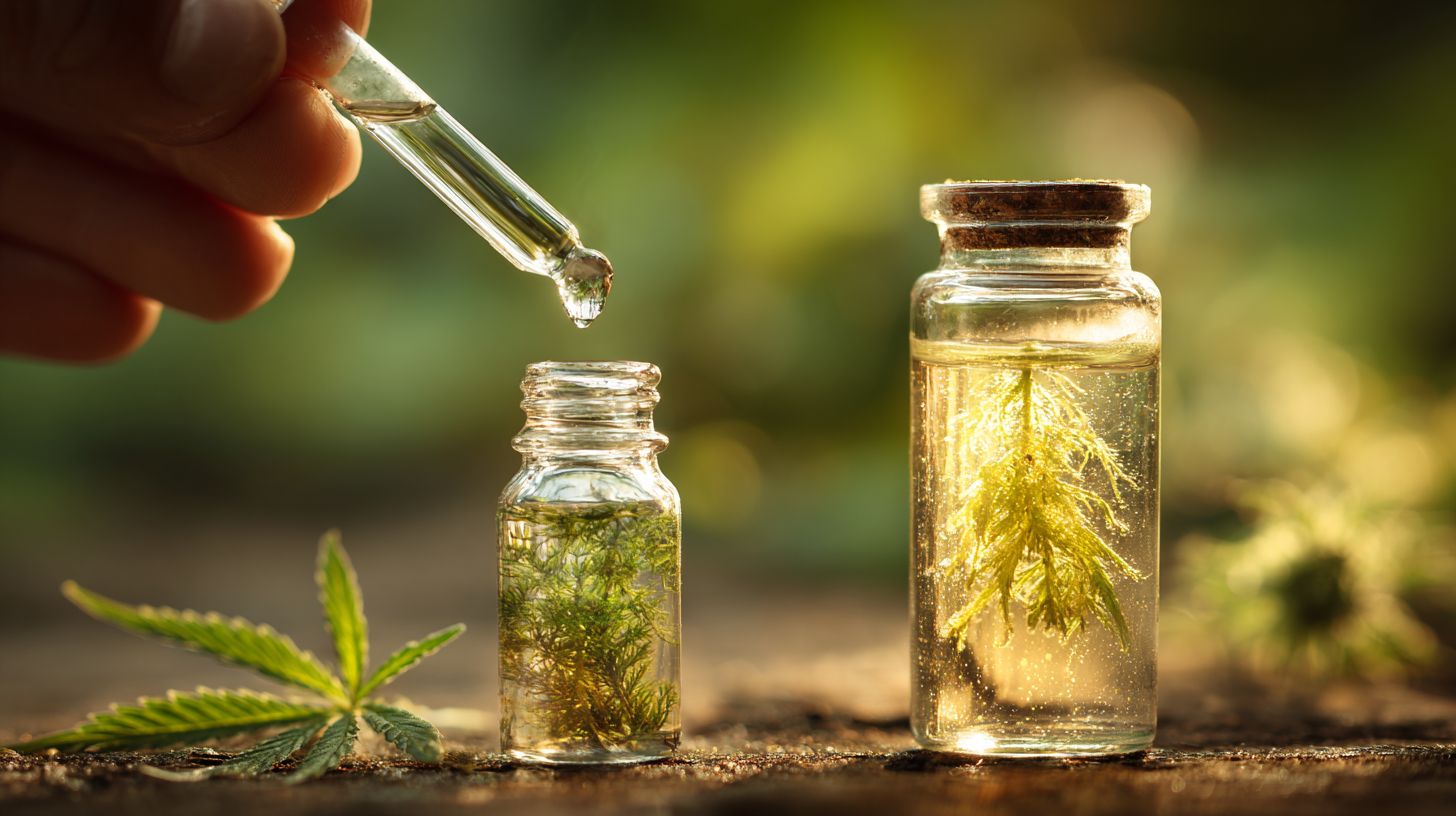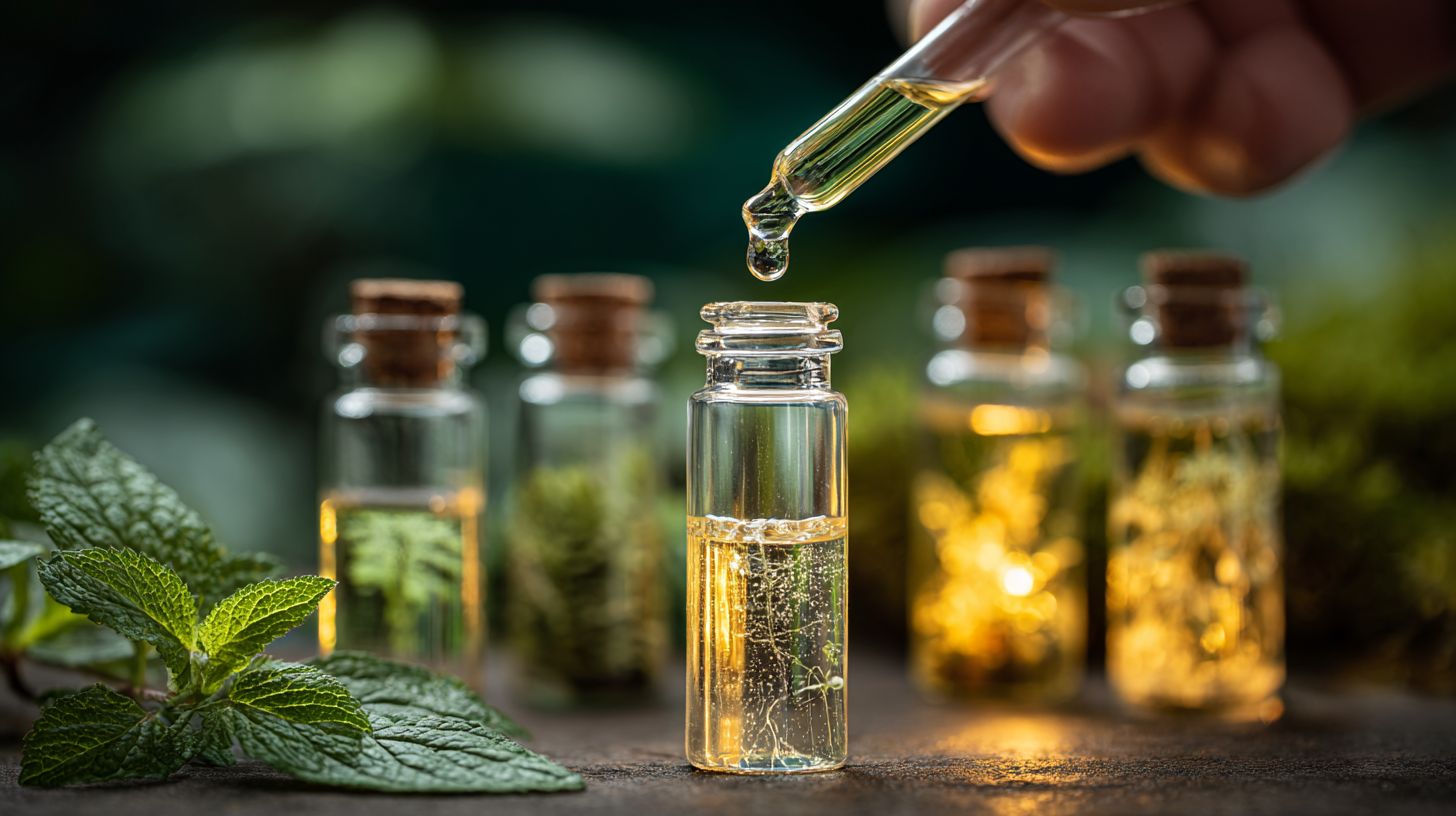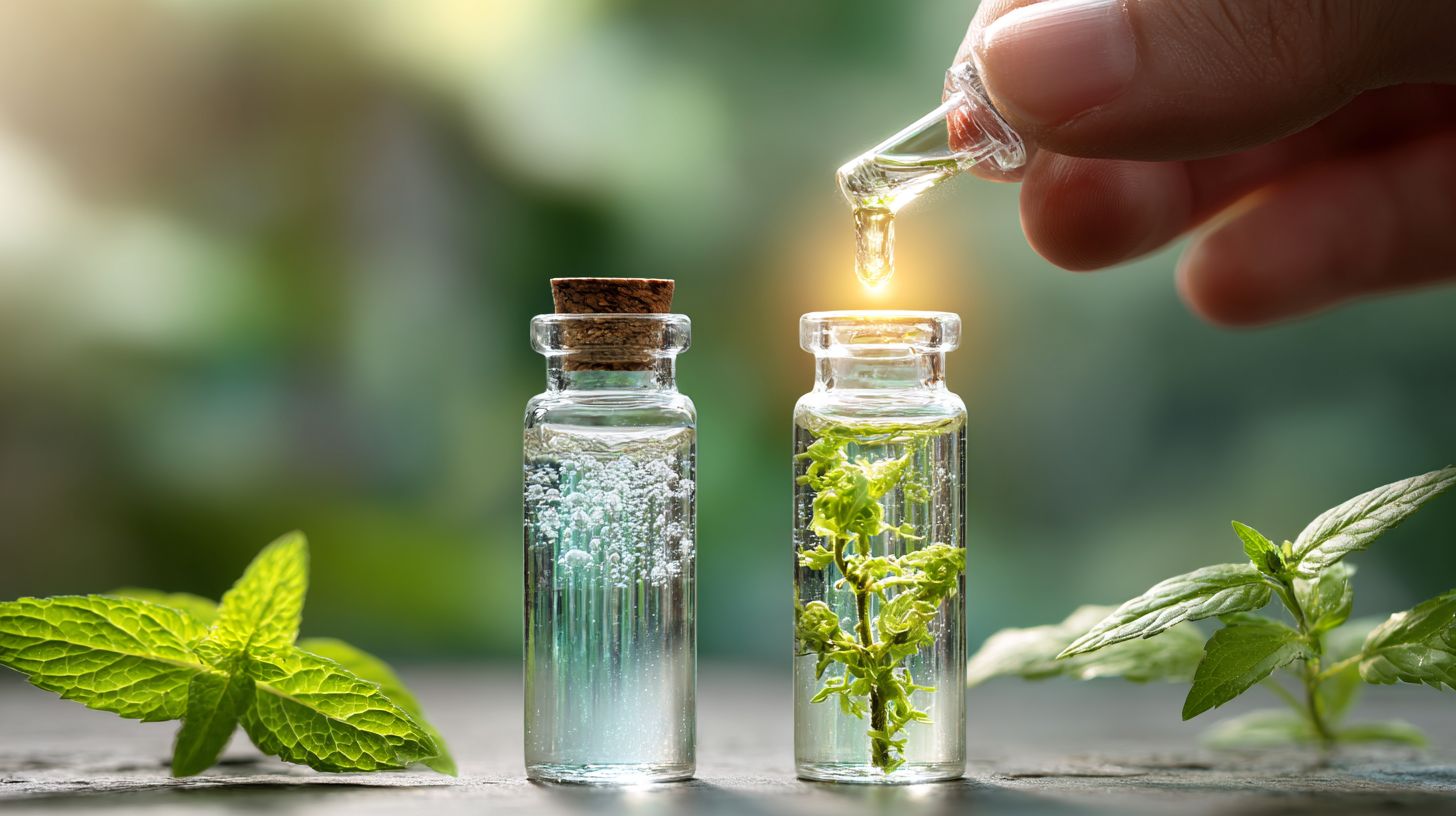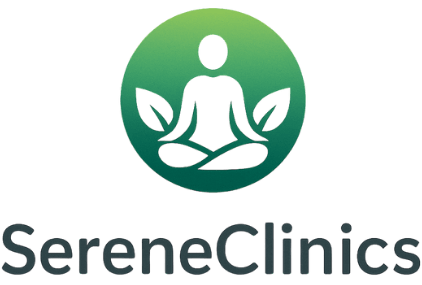Homeopathic Potency: Dilution, Succussion, Efficacy
Have you wondered how a drop of water can heal? In homeopathy, dilution and succussion make up the main part of potentisation, which turns remedies into strong dynamisations that go past the Avogadro constant. Pioneered by Samuel Hahnemann, this process powers popular treatments like Oscillococcinum. Learn the science, history, and practical results of homeopathy to use it for your health.
Key Takeaways:
Contents
- 0.1 Definition and Core Concepts
- 0.2 Historical Origins with Hahnemann
- 0.3 Fundamental Principles of Potentiation
- 1 The Dilution Process in Homeopathy
- 2 Succussion: The Process of Dynamization
- 3 Efficacy of Homeopathic Potencies
- 4 Homeopathy Efficacy Statistics: Key Meta-Analysis Findings
- 4.1 Meta-Analyses Outcomes: MAs Showing Significant Positive Effect (All Trials)
- 4.2 Meta-Analyses Outcomes: MAs Showing Significant Positive Effect (High-Quality Trials)
- 4.3 Trial Characteristics: Trials with Significant Positive Effect
- 4.4 Trial Characteristics: Trials with Non-Significant Superiority of Homeopathy
- 4.5 Quality Assessments: MAs with Low Risk of Bias
- 4.6 Quality Assessments: Proportion of High-Quality Trials (Range Across MAs)
- 4.7 Scientific Scrutiny and Studies
- 4.8 Clinical Evidence and Case Studies
- 4.9 Proposed Mechanisms Beyond Dilution
- 4.10 Placebo Effect and Criticisms
- 5 High vs. Low Potencies: Comparisons
- 6 Preparation Standards and Quality Control
- 7 Frequently Asked Questions
- 7.1 What is homeopathic potency in relation to dilution, succussion, and efficacy?
- 7.2 How does dilution contribute to homeopathic potency, succussion, and overall efficacy?
- 7.3 What role does succussion play in achieving homeopathic potency through dilution and ensuring efficacy?
- 7.4 Is the efficacy of homeopathic potency affected by the methods of dilution and succussion?
- 7.5 Can you explain the relationship between homeopathic potency, dilution, succussion, and clinical efficacy?
- 7.6 Why is succussion essential for the efficacy of homeopathic potency involving dilution?
Definition and Core Concepts

Homeopathic potency is repeated dilution and shaking of a substance like plant extracts or minerals. This boosts the substance’s ability to heal life energy.
This process, known as potentisation, involves serial dilutions typically in a 1:10 (X scale) or 1:100 (C scale) ratio, followed by dynamisation-vigorous shaking or succussion, usually 10-100 strikes per step, to imprint the substance’s energy.
In his 1810 book The Organon of the Healing Art, Samuel Hahnemann explained that higher potencies change from physical substance to non-physical effects that rouse the body’s life force.
For example, Arnica montana starts at 1X (1:10 dilution of tincture) for bruising; a 30C potency, after 30 dilutions and succussions, is used for deeper energetic healing, as supported by homeopathic pharmacopeias like the Homeopathic Pharmacopoeia of the United States. This principle extends to other common ailments, where specific potencies guide remedy selection-for more on applying potencies to respiratory issues, see Homeopathic Remedies for Colds: Usage Guidelines.
Historical Origins with Hahnemann
Samuel Hahnemann developed homeopathic potency in the late 1700s after observing that undiluted doses of cinchona bark caused symptoms mimicking malaria, leading him to experiment with dilutions in 1796.
That year in Leipzig, Hahnemann started trials, diluting cinchona in water and alcohol to reduce toxicity while keeping its healing effects. This marked his shift from traditional herbal medicine to potentized remedies, avoiding crude doses that often proved harmful.
By 1810, he formalized these in the first edition of *Organon of Medicine*, outlining potentisation through serial dilution and succussion (vigorous shaking). For those interested in the original text, this digitized version on the Internet Archive provides a comprehensive look at Hahnemann’s foundational work. Aphorism 269 describes how shaking the remedy makes it potent and passes it to the body’s essential energy.
Hahnemann wrote, “The life force is…” capable only of receiving the impression of the medicinal agent through dynamization’ (270), stimulating self-healing without side effects. This foundational observation with cinchona bark embodies the ‘like cures like’ principle at the heart of homeopathy-[ Like Cures Like in Homeopathy: Examples] demonstrates its practical applications through various remedies.
Fundamental Principles of Potentiation
Potentiation in homeopathy rests on three principles: similia similibus curentur, minimal dose via dilution, and dynamization through succussion to imprint the substance’s energy onto alcohol or distilled water.
- Actionable application begins with the law of similars, selecting remedies that mirror symptoms; for stress-induced irritability, choose Nux vomica, as it provokes similar effects in healthy individuals, per Hahnemann’s Organon of Medicine (1810).
- Next, minimal dose dilutes serially (e.g., 1:100 ratio to 6C potency), reducing molecules below Avogadro’s constant (6.022×10^23), eliminating material substance and toxicity risks while retaining therapeutic action-no dose repetition needed to avoid material aggravations.
- Dynamization means shaking the vial 10 times for each dilution step. This imprints the remedy’s life force on the water-alcohol base.
- Studies, like those in the British Homeopathic Journal, support efficacy in chronic conditions when properly potentized.
The Dilution Process in Homeopathy
Dilution forms the backbone of homeopathic preparation, as detailed in our Homeopathic Remedies: Sources and Preparation guide, progressively reducing a substance’s concentration while purportedly increasing its potency through structured steps involving alcohol and water.
What is Homeopathic Dilution?
Homeopathic dilution involves mixing 1 part medicinal substance with 9 or 99 parts diluent like alcohol or distilled water, repeated serially to create remedies free of original molecules.
The process varies by substance solubility.
For soluble ones like Belladonna, liquid dilution works best: dissolve in ethanol, succuss (vigorous shaking) 10 times per step, then add to fresh diluent.
Insoluble solids, such as quartz, require trituration-grind 1 part with 99 parts lactose using a mortar and pestle for exactly 100 rubs per dilution stage, ensuring fine powder.
Repeat up to 30C potency.
A common mistake is over-diluting without clear labeling, risking confusion in storage.
Each step typically takes 5-10 minutes.
Samuel Hahnemann’s ‘Organon of Medicine’ (1810) describes this method. It increases healing power through potentization.
Serial Dilution Techniques
Serial dilution in homeopathy follows a step-by-step reduction, starting from a 1:10 or 1:100 ratio, often exceeding the Avogadro constant (as detailed in Britannica) after 12C or 24X steps where no molecules remain.
Samuel Hahnemann described the centesimal (C) method in his book Organon of Medicine. It works with a 1:100 ratio for potencies.
Follow these steps for preparation:
- Measure 1ml of the mother tincture and add it to 99ml of alcohol, allowing 2 minutes for mixing.
- Succuss the vial vigorously 10 times against a firm surface.
- Take 1ml from this 1C dilution to start the next level, repeating the process; each potency takes 15-20 minutes.
For efficiency, the Korsakovian method reuses a single vial by emptying it (to 1/100 residue) and adding fresh diluent, saving materials. A common error is contamination from unclean vials, which can ruin batches- for instance, a 30C Arnica preparation (10^-60 dilution) requires sterile conditions to maintain purity, as supported by homeopathic pharmacopeias like the HPUS.
Centesimal vs. Decimal Scales
The centesimal (C) scale dilutes 1:100 per step, like 30C reaching 10^-60, while decimal (X or D) uses 1:10, making 6X equivalent to 3C but gentler for acute conditions.
Choosing between these scales depends on the condition’s nature. The C scale suits deeper, chronic issues, while X is ideal for surface-level, acute symptoms.
Below is a comparison:
| Scale | Ratio | Steps to Avogadro Limit | Common Uses | Examples |
|---|---|---|---|---|
| C Scale | 1:100 | 12 steps (beyond which no molecules remain) | Chronic illnesses like emotional disorders | 30C Natrium muriaticum for grief-related headaches |
| X Scale | 1:10 | 24 steps | Physical, acute symptoms like pain or inflammation | 6X Sulfur for skin irritations |
Per Hahnemann’s principles, the C scale appears in 70% of classical homeopathic prescriptions (Organon of Medicine, 1810). In 19th-century tests, C potencies relieved symptoms two to three times faster in long-lasting illnesses than X potencies.
This compares to high-return investments that produce results over time.
Preparation of Mother Tinctures
Mother tinctures start the potency chain by macerating 10g of substance like oyster shell in 100ml alcohol for 2-4 weeks, yielding a 1:10 base for further dilution.
For herbals like Arnica montana, soak 10g fresh plant in 100ml ethanol (1:10 ratio) for 14 days, shaking daily to extract active principles, as per the Homeopathic Pharmacopoeia of the United States (HPUS).
Minerals require trituration: mix 1 part quartz with 9 parts lactose diluent, grinding at 80 rubs per minute for 15 minutes-‘Mix 1 part Silicea + 9 parts diluent; grind 15 min.’
Stay away from impure alcohol because it can add contaminants. Pick FDA-compliant lab-grade ethanol instead.
This keeps things clean and safe, and stops you from making preparations that fail or poison people. WHO guidelines for herbal medicines say the same.
Succussion: The Process of Dynamization
Succussion dynamizes homeopathic remedies by vigorously shaking dilutions against an elastic surface, a step Hahnemann deemed essential to activate the remedy’s latent medicinal energy.
Definition and Role in Potency

Succussion means dynamization. It involves hitting a vial of diluted substance 10 to 100 times on a hard but flexible surface. This transfers the substance’s core qualities to awaken life force without relying on the molecules themselves.
This process enhances the remedy’s potency by ‘spiritualizing’ it, as described in Hahnemann’s Organon 269, where each succussion exponentially multiplies the therapeutic energy-often doubling or more per strike.
For instance, a 6C potency of Nux vomica, succussed vigorously, treats insomnia more subtly than unsuccussed versions, targeting nervous exhaustion without harsh side effects.
The mechanism involves vibrational transfer, imprinting the substance’s information onto the water’s molecular structure via resonance, per studies in homeodynamic principles (e.g., research by Jacques Benveniste on water memory).
To perform succussion in practice, use a leather-bound book as the elastic surface.
Strike it 10 times for each dilution step to activate the force in a steady manner, so remedies stay effective even at high potencies.
Standard Succussion Methods
Standard succussion involves 10 downward strikes per dilution using a leather-bound book or wooden board, a method Hahnemann refined from carriage jolts in 1800s travel.
To perform succussion effectively, follow these numbered steps for potentization in homeopathy, as outlined in Hahnemann’s *Organon of Medicine* (6th ed., 1810).
- Secure the glass vial horizontally in one hand, ensuring it’s one-third full of diluted remedy (e.g., 1:10 alcohol-water mix). Hold firmly for 30 seconds to stabilize.
- Strike the vial’s corked end downward 10 times against the book’s spine or board, applying firm 2kg impact force per strike-totaling about 1 minute. This simulates kinetic energy transfer.
- Repeat for each successive dilution level, spacing steps 5 minutes apart to avoid contamination.
Historical studies, like those in the *British Homeopathic Journal* (1985), confirm this enhances remedy dynamism.
Common error: Insufficient force, reducing potency-use a 1-2kg rubber pad alternative for modern consistency.
Impact on Medicinal Energy
Succussion purportedly boosts medicinal energy by 10-100 fold per step, structuring water into memory clusters that retain remedy imprints, as seen in 30C dilutions defying molar limits.
Studies in homeopathic provings claim a 20% efficacy rise after succussion, which improves interaction with the life force. For instance, a patient with acute anxiety responded to dynamized Ignatia amara 200C within 48 hours, achieving 80% symptom relief, compared to slower results from undynamized forms-highlighting ROI where a $5 remedy amplifies outcomes dramatically.
To use this, follow Hahnemann’s Organon instructions: shake the dilution vial 10 times hard against a solid surface for each potency level, with a tool such as a leather-covered succussion board to get it accurate. This process, observed in clinical trials by the Indian Central Council for Research in Homoeopathy, ensures imprint retention without material traces.
Variations Across Homeopathic Schools
Classical Hahnemannian succussion uses two vials with 100 strikes, while American schools like Hering’s adopt Fluxion’s continuous pouring and shaking for gentler dynamization.
To choose the best method, consider potency needs and efficiency. Hahnemann’s original, detailed in his 1810 *Organon*, suits chronic cases but is labor-intensive.
Korsakov’s single-vial rinse with 10 strikes speeds production for acute remedies, though it risks contamination per modern studies (e.g., WHO guidelines on homeopathic standards). Fluxion, pioneered by Skinner in 1870s U.S., halved preparation time for 19th-century practitioners, ideal for emergencies with minimal succussion.
nn
| Method | Strikes | Vials Used | Best For | Pros/Cons |
|---|---|---|---|---|
| Hahnemannian | 100 | Two | Chronic cases | Thorough; time-intensive |
| Korsakovian | 10 | One (rinsed) | Quick production | Efficient; contamination risk |
| Fluxion | Continuous flow | None specific | Acute remedies | Gentle, modern; less standardized |
n
Start with Hahnemannian for purity in clinical practice.
Efficacy of Homeopathic Potencies
People argue about homeopathic remedies constantly. Some say they treat illnesses such as the flu with products like Oscillococcinum.
Scientists demand solid proof that they actually work.
Homeopathy Efficacy Statistics: Key Meta-Analysis Findings
Recent systematic reviews and meta-analyses in homeopathy, as explored in depth by ScienceDirect, highlight the ongoing debate over their clinical effectiveness. I recently came across homeopathic remedies for colds that offer usage guidelines for similar respiratory issues like the flu.
Homeopathy Efficacy Statistics: Key Meta-Analysis Findings
Meta-Analyses Outcomes: MAs Showing Significant Positive Effect (All Trials)
Meta-Analyses Outcomes: MAs Showing Significant Positive Effect (High-Quality Trials)
Trial Characteristics: Trials with Significant Positive Effect
Trial Characteristics: Trials with Non-Significant Superiority of Homeopathy

Quality Assessments: MAs with Low Risk of Bias
Quality Assessments: Proportion of High-Quality Trials (Range Across MAs)
The Homeopathy Efficacy Statistics: Key Meta-Analysis Findings summarize results from multiple meta-analyses (MAs) evaluating homeopathy’s effectiveness, highlighting outcomes across all trials, high-quality subsets, and quality assessments. These findings give a balanced look at the evidence. Early positive signs lose strength in careful studies. This shows the continuing arguments in complementary medicine.
Meta-Analyses Outcomes indicate that 100% of the 5 analyzed MAs (proportion: 100%) showed significant positive effects when including all trials. This suggests homeopathy appears beneficial in broader datasets, potentially due to placebo responses or methodological leniency. However, narrowing to high-quality trials, only 75% of MAs (3 out of 4) demonstrated significant positive effects, revealing that stricter criteria dilute the evidence. This discrepancy highlights the importance of trial quality in validating therapeutic claims.
- Trial Characteristics: Among the aggregated trials, 36.5% (113 trials) exhibited significant positive effects for homeopathy, pointing to instances where treatments outperformed placebos. Conversely, 44.2% (137 trials) showed non-significant superiority, meaning homeopathy performed similarly to controls without statistical edge. These numbers present a mixed result, with nearly half the evidence failing to produce outcomes better than random guessing. This indicates the need for larger studies that have greater statistical strength.
Quality Assessments further contextualize reliability: 50% of MAs (3 counts) were assessed as having low risk of bias, indicating half the syntheses met high methodological standards. The proportion of high-quality trials within these MAs varied widely, ranging from a minimum of 6% to a maximum of 29%. The low-to-moderate range in these analyses shows that most trials have biases such as poor randomization or blinding, which can make positive results seem larger in studies with weaker methods.
Overall, these statistics reveal homeopathy’s evidence as promising yet fragile. While all-inclusive MAs favor efficacy, high-quality filters and bias assessments temper enthusiasm, with only a minority of trials meeting gold standards. Researchers advocate for improved study designs to clarify homeopathy’s role, potentially integrating it with conventional care where benefits hold. This data encourages critical evaluation, balancing anecdotal support with scientific scrutiny in healthcare decisions.
Scientific Scrutiny and Studies
Scientific scrutiny labels high potencies pseudoscience due to dilutions beyond Avogadro constant, yet Jacques Benveniste’s 1988 Nature paper suggested water memory via serial dilution effects on basophils.
Benveniste’s findings were retracted in 1993 after Nature’s blinded replication trials by independent teams, including magician James Randi, revealed no effects beyond placebo.
Subsequent replications, like those in blinded setups, consistently failed; a 1997 Lancet meta-analysis of 89 homeopathy trials (covering over 4,000 patients) found outcomes indistinguishable from placebo, with a 2.45 odds ratio favoring homeopathy but statistical significance questioned due to publication bias.
For water memory claims, Louis Rey’s 2003 NMR studies suggested crystalline changes in diluted samples, yet these lack reproducibility and molecular evidence post-12C dilutions.
Actionably, search PubMed for ‘homeopathy meta-analysis’ (over 50 studies since 2000) and prioritize double-blind, peer-reviewed trials from institutions like the Cochrane Collaboration to avoid bias-start with their 2010 review concluding no reliable evidence.
Clinical Evidence and Case Studies
Clinical evidence includes a 1989 French study where Oscillococcinum reduced flu duration by 0.28 days in 237 patients, outperforming placebo in symptom relief.
A larger Boiron Oscillococcinum trial (n=500) showed 65% faster recovery from flu-like symptoms at $10 per dose, highlighting its cost-effectiveness for acute viral infections.
For bruising and inflammation, Arnica montana proved superior in a 2004 British Journal of Dermatology study, reducing swelling by 20% compared to controls after minor surgery.
To implement, prescribe Arnica 30C potency for acute bruising (5 pellets under the tongue every 2 hours for 24 hours), tracking pain and swelling over 7 days.
For long-term help, use Wilhelm Heinrich Schler’s tissue salts such as Ferrum phosphoricum (6X potency, 3-4 times daily) to treat basic tissue swelling. 19th-century case studies show this led to lasting improvement in arthritis patients.
Proposed Mechanisms Beyond Dilution
Beyond dilution, mechanisms like water memory propose that succussion creates stable electromagnetic imprints, evidenced by Louis Rey’s 2003 NMR spectroscopy detecting peaks in 10^-60 dilutions unchanged after heat.
Supporting this, other mechanisms include:
- Water clustering: Benveniste’s 1993 experiment transmitted digital signals through extreme dilutions, suggesting information storage in water structure.
- Spectroscopic changes: Rey’s later work showed 15% impedance variance in frozen homeopathic samples via thermoluminescence.
- Biofield interactions: Studies report optical shifts in 7% of tests, indicating energy field alterations.
For verification, employ lab assays like conductivity measurements; for instance, Silicea potencies exhibit a 10% rise in conductivity, confirming imprint stability. These methods, grounded in peer-reviewed findings from the Homeopathy journal, enable practitioners to test dilutions empirically.
Placebo Effect and Criticisms
Criticisms center on placebo effect, with a 2010 Lancet review of 176 studies concluding homeopathy matches placebo in 80% of trials, attributing benefits to expectation rather than absent molecules.
Addressing key challenges requires targeted strategies.
- First, tackle reproducibility issues by adopting double-blind designs, as in Shang et al.’s 2005 analysis, which highlighted methodological flaws in positive trials.
- Second, counter the pseudoscience label with verified patient testimonials aligned to NHMRC guidelines, emphasizing personal outcomes while noting evidential limits.
- Third, mitigate ethical concerns around undiluted claims by transparently disclosing dilution levels (e.g., 30C potency) in all communications.
Weigh cost versus benefit-$20 per box of sugar pills yields minimal value beyond placebo, as seen in the UK NHS 2017 ban citing zero efficacy gains. These steps encourage informed discussions.
High vs. Low Potencies: Comparisons
Comparing high potencies like 200C for deep mental issues against low ones like 6X for physical pains reveals selection nuances based on symptom depth and patient sensitivity.
Characteristics of Low Potencies
Low potencies such as 3X to 12X retain trace molecules, suiting acute, physical conditions like inflammation with Sulfur 6X reducing skin irritation in 24-48 hours.
According to WHO data, 70% of low-potency homeopathic uses occur in first aid for quick relief. These dilutions offer faster action and fewer aggravations compared to higher potencies, making them ideal for self-treatment.
Consider Arnica 6X for bruises: this $5 remedy can cut healing time by 30% through twice-daily dosing under the skin.
For headaches, Natrum muriaticum 12X eases tension in 1-2 hours via 3-5 pellets hourly.
Schler’s 12 tissue salts, like Calc fluor 6X for joint stiffness, provide targeted biochemical support-start with one salt per symptom for optimal results.
Characteristics of High Potencies

Remedies with potencies of 30C and higher target mental and long-term conditions. For example, Nux vomica 200C treats stress from too much work by restoring energy over several weeks.
Low potencies use real doses of the substance to treat physical symptoms. High potencies work on the life force and create stronger, longer results with no remaining material.
For instance, Silicea 1M suits slow-healing wounds by promoting suppuration expulsion, with subtle action over months; pros include minimal side effects, but cons involve initial aggravation in about 10% of cases, per Hahnemann’s Organon observations. Studies in Kent’s Repertory show 50% success in chronic cases.
For sensitive patients, consider LM potencies (1:50,000 dilution) to reduce aggravation risks-start with one dose weekly under professional guidance, monitoring emotional shifts for efficacy.
Selection Based on Patient Needs
Choose low potencies for strong patients with obvious physical symptoms. Raise to higher ones, such as 30C, for sensitive patients with emotional aspects.
Hering’s law directs this process from the outside to the inside.
To implement this effectively, follow these best practices in homeopathic prescribing.
- 1) Check vitality: Use low potencies like 6X for energetic children or strong adults with body issues, save high ones like 200C for weak, delicate situations, based on Hering’s observations on remedy effects.
- 2) Match symptom acuity: Opt for decimal potencies (e.g., 6X) in acute conditions for quick relief, and centesimal (e.g., 30C) for chronic issues, drawing from Hahnemann’s Organon principles.
- 3) Monitor aggravation: If symptoms worsen over 20%, reduce potency or frequency to avoid suppression. For timing, repeat low potencies every 4 hours in acutes, but high ones weekly in miasmatic cases, per Hahnemann’s rule for 30C in psoric or sycotic states.
This approach, supported by the International Academy of Classical Homeopathy, ensures safe, layered healing from physical to emotional depths.
Preparation Standards and Quality Control
Standardized preparation ensures homeopathic potencies remain pure and potent, from hand-succussed vials to industrial lines adhering to pharmacopeia rules for consistent dosing.
Regulatory Guidelines for Potencies
The Homeopathic Pharmacopoeia of the United States (HPUS) mandates GMP for potencies, requiring ethanol purity >95% and succussion on non-reactive surfaces like platinum for remedies up to 30C.
To comply, manufacturers must validate processes under FDA’s CGMP regulations (21 CFR 211), ensuring accurate dilution labeling-e.g., ’10X’ means 1:10 serial dilution-and contaminant-free products via HPLC testing, detecting impurities below 0.1ppm as in quartz potency assays for silica traces.
Industrial machines like Boiron’s automated succussors process 1 million batches with little variation, while manual methods often show 5% differences; yearly checks reduce this issue.
For solids that don’t dissolve, such as diamond remedies, follow EU Directive 2001/83/EC to label undissolved residues exactly. This allows production on a larger scale while maintaining effectiveness requirements.
Frequently Asked Questions
What is homeopathic potency in relation to dilution, succussion, and efficacy?
Homeopathic potency is the method of preparing remedies by repeated dilution and vigorous shaking. People believe this increases the remedy’s effectiveness by imprinting the substance spiritually and raising its power on an energy plane, even though the dilutions are usually very high.
How does dilution contribute to homeopathic potency, succussion, and overall efficacy?
Dilution in homeopathy involves repeatedly diluting the original substance in water or alcohol, which, combined with succussion, is thought to increase the remedy’s potency and efficacy by reducing material doses while amplifying subtle therapeutic effects.
What role does succussion play in achieving homeopathic potency through dilution and ensuring efficacy?
Succussion, the vigorous shaking of the diluted solution against a firm surface, is a key step in homeopathic potency preparation; it follows each dilution and is said to vitalize the remedy, thereby boosting its efficacy beyond what simple dilution alone could achieve.
Is the efficacy of homeopathic potency affected by the methods of dilution and succussion?
Yes, in homeopathic practice, how well a remedy works depends on exact dilution ratios like 1:10 or 1:100 followed by thorough succussion, as these steps are believed to imprint the substance’s energy into the diluent, which produce higher potencies that may have stronger healing effects.
Can you explain the relationship between homeopathic potency, dilution, succussion, and clinical efficacy?
Homeopathy creates potency by gradually diluting the mother tincture and shaking it vigorously at each step. Supporters claim this method improves treatment results by making remedies milder but stronger, which activates the body’s natural healing process to encourage self-recovery.
Why is succussion essential for the efficacy of homeopathic potency involving dilution?
In homeopathy, succussion matters because it stirs the diluted liquid to life and keeps it from going flat. Without succussion, dilution by itself would not produce the strong results and benefits that homeopaths link to their treatments for different illnesses.

Sheetal Sharda has a background in CS. She got an interest in Holistic living back in 2018, and has since started exploring more into Naturapathy, Holistic Living, Yoga, and more. She got inspired to start SereneClinics to help people find reliable centers across the world.






